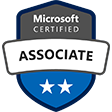Course Overview:
This course is extremely fast paced and for students that have already had UNIX or Linux training, or have not worked with Linux in several months or years. This is NOT a course for students new to Linux and assumes the student requires a refresher before progressing through high end security courses that require dexterity on Linux. RedHat and Ubuntu, VMware Virtual Machines, and BackTrack are used for the instruction of this course. The student will acquire the skills to easily navigate the advanced VMware training environment and will be able to create scripts to manipulate and manage Linux. The ulimate goals of the skills of this course is to provide the student the ability to automate through scripting BackTrack tools for offensive security, forensics, and defense.
Attendees to L-395: Accelerated Linux Administration and Utilities will receive TechNow approved course materials and expert instruction.
Date/Locations:
No Events
Duration: 5 days
Course Objectives:
Day 1 and 2: Unix Review and Unix Utilities
- Linux File System Archictecure and In-Depth discussion of Hard and Soft Links
- Linux File, Directory, and Permissions Management
- Linux archives using tar and zip
- Interacting with BASH
- Review of Common Linux commands
- Sorting files by line or field
- Regular Expressions (meta character) with grep commands to locate specific lines in files
- Grep, egrep extended metacharacters, combinations-lab advanced combinations- lab Sed
- Basic commands- Lab, Advanced commands- Lab, Advanced scripting -Lab
- Miscellaneous commands Tr, sort, cut, past, pr -Lab
- Performing non-interactive editing tasks with the sed command
- Writing simple sed scripts to perform complex editing tasks
- Using awk variables & arrays to sort data
- Employing awk programs to manipulate numeric & textual data
- Performing formatted printing in awk
- Writing simple awk programs to write reports from data files
- Using built-in awk functions & defining new functions
- Write awk programs that make decisions based on numeric or string comparisons (branches & loops)
- Shell Review
- Shell Interpretation of Quotes & Backslash
- The Bash Shell
- Shell's combined with UNIX utilities
- Programming Basics
- Data Constructs
- Programming Looping
- Your Environment
- More on Parameters
Day 4 and 5 – Security Fundamentals, Linux Administration
- System Configuration / Kernel overview
- System Maintenance / Disk and file admin
- Using utilities for process control, locating files & automating maintenance tasks
- System Startup / Boot Process – LILO & GRUB Configuration
- Managing the Linux file system
- Customization of setup files
- Run Levels
- Network Services / Configuration
- User Management Monitoring, accessing & restricting root system access
- Administration Tools
- Process Control
- Client side components of NFS, Samba, NTP, NIS
- Server side components such as DHCP, Samba, NIS, LDAP, inet, telnet, ftp, DNS, etc.
Prerequisites:
- Prior UNIX/Linux experience or training
Comments
Latest comments from students
User: mikenaya
Instructor comments: As usual, Dave was excellent and the content was very relevant to our line of work.
Facilities comments: The hotel facilities met our basic needs but it was awkward having a bathroom so close. I can't wait for the new facility to open.
User: fquinene
Instructor comments: Instructor was super knowledgeable and helped me tie in a lot of information from other OS and processes.
Facilities comments: Facility was fine

